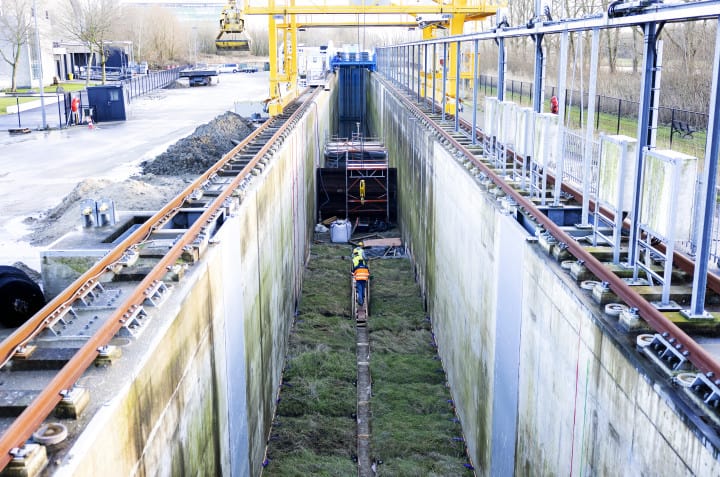
‘Water level Markermeer very high, night checks in Hoorn,’ headlined the local newspaper the Stentor yesterday morning. Or Limburg1, today: ‘Maas reaches highest water level in three years.’ A harsh winter seems further away than ever. Instead, it is raining water level records (literally).
The challenges of water management in the Netherlands are diverse and complex. With the current climate changes, we face a paradox: half of the year, we have a water shortage, the other half a surplus. Dutch dikes, locks, and pumping stations are under pressure and must be strengthened in the coming decades to protect our country from flooding. Piping poses a significant threat in this respect. This phenomenon, in which water with sand particles flows under the dike and potentially creates small tunnels, can seriously undermine the stability of our flood defenses.
Why you need to know this:
Watermanagement in the Netherlands face complex challenges. On the one hand: the threat of water level records. On the other: a shortage of water in dry periods. This article explains how the Netherlands’ water management is regulated.
Tackling piping
The fight against piping requires innovative solutions. Measures are being taken to strengthen the subsoil of dikes and prevent piping from developing, such as modern techniques and materials that reinforce the soil structure under the dike. Just an example of how the Netherlands is applying its water management expertise to deal with extreme weather’s effects.
Cooperation in water management
The key to successful water management is cooperation between governments, water managers, knowledge institutions, and companies. Nelen & Schuurmans is an example of a company developing a data-driven platform to keep cities livable. By pooling data, they can predict where and when problems will occur due to downpours, for example, and how to deal with them.
International ambitions
The Netherlands has a reputation to uphold when it comes to water management. Our knowledge and experience are recognized internationally. It offers opportunities for Dutch companies to export their IT services in water management. The comparison with the German automotive industry, where the entire chain works together to make the best products, is apt. To strengthen this position, it is essential that the various parties sit down together, director Fons Nelen of Nelen & Schuurmans told IO earlier. His vision? Transforming the Netherlands into the Silicon Valley of water management.

National policy and water management
Responsibility for water management in the Netherlands lies with various agencies. Rijkswaterstaat manages large bodies of water and maintains dikes and storm-surge barriers. The water boards focus on regional waters and are responsible for water treatment and flood prevention. The provinces and municipalities each have their water management and spatial planning tasks.
The Dutch government has drawn up the National Water Program (2022-2027), which sets out policy on flood risk management and freshwater supply. It also looks at optimal ways to include water in the spatial planning of the Netherlands.
Future-proof building and policy
Experts advocate a future-proof approach to water management. This means thinking locally and avoiding building in certain places or adapting to the risks. Water boards and insurers warn of increasing difficulties and potentially unaffordable damages from changing weather conditions and environmental influences. Sustainable legal anchoring of policies is necessary to get ahead of these problems.
With the policy line “Water and Soil Stewardship,” the Dutch government has set a clear direction for spatial planning and water management. This policy should maintain good intentions and lead to actual actions and adjustments in how we deal with our water-rich environment.
The threat of water level records requires a proactive attitude and intelligent solutions, such as addressing piping. The expertise of companies like Nelen & Schuurmans, combined with a national, legally supported strategy, can put the Netherlands on the map as a world leader in water management. The time is ripe to join hands and take the necessary steps to keep our country safe and livable.









